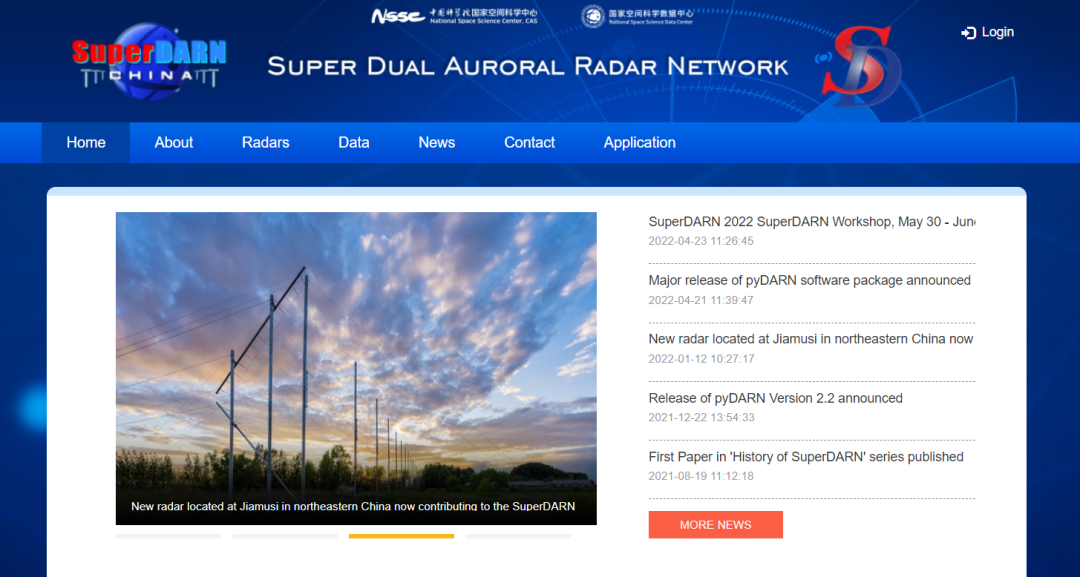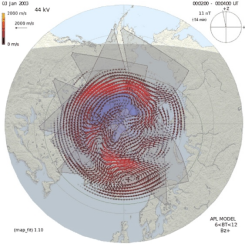SuperDARN China
The Super Dual Auroral Radar Network (SuperDARN) is an international scientific radar network consisting of 35 high frequency (HF) radars located in both the Northern and Southern Hemispheres. SuperDARN radars are primarily used to map high-latitude plasma convection in the F region of the ionosphere, but the radars are also used to study a wider range of geospace phenomena including field aligned currents, magnetic reconnection, geomagnetic storms and substorms, magnetospheric MHD waves, mesospheric winds via meteor ionization trails, and interhemispheric plasma convection asymmetries.

In order to improve the time efficiency and stability of data release and the security of data, the SuperDARN Executive Committee decided to rearrange and redesign the current data mirroring system at the SuperDARN International Conference held in May 2021, and solicited the addition of new data mirroring stations. The proposal of establishing the SuperDARN international data mirroring station at the National Space Science Center (NSSC) was proposed by researcher Jiaojiao Zhang of the National Key Laboratory of Space Weather, and the leadership of the Institute expressed support and coordinated with the National Space Science Data Center for the implementation.
SuperDARN NSSC is one of the three international data mirror stations of SuperDARN, following the British Antarctic Survey (BAS) and the University of Saskatchewan, Canada, which are responsible for the global SuperDARN radar data collection, distribution and publication.
The primary goals of SuperDARN are to determine or study:
Structure of global convection—to provide a global-scale view of the configuration of plasma convection in the high-latitude ionosphere;
Dynamics of global convection—to provide a global-scale view of the dynamics of plasma convection in the high-latitude ionosphere. (Previous studies of high-latitude convection had largely been statistical and time-averaged);
Substorms—to test various theories of polar cap expansion and contraction under changing IMF conditions and observe the large-scale response of the nightside; convection pattern to substorms:
Signatures of atmospheric gravity waves in the ionosphere,[4]High-latitude plasma structures, and Ionospheric irregularities
